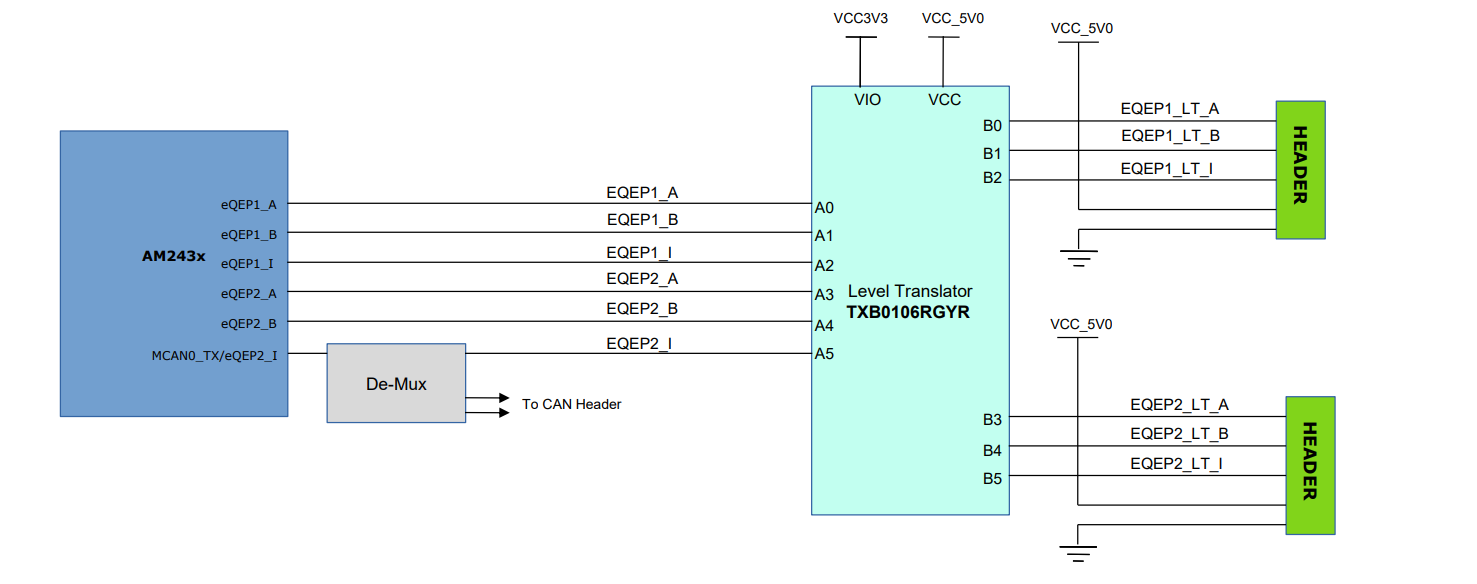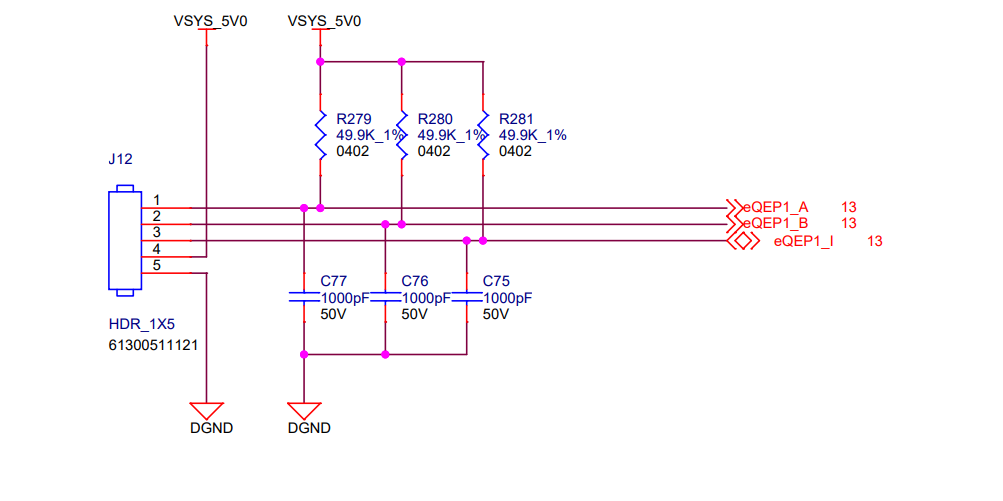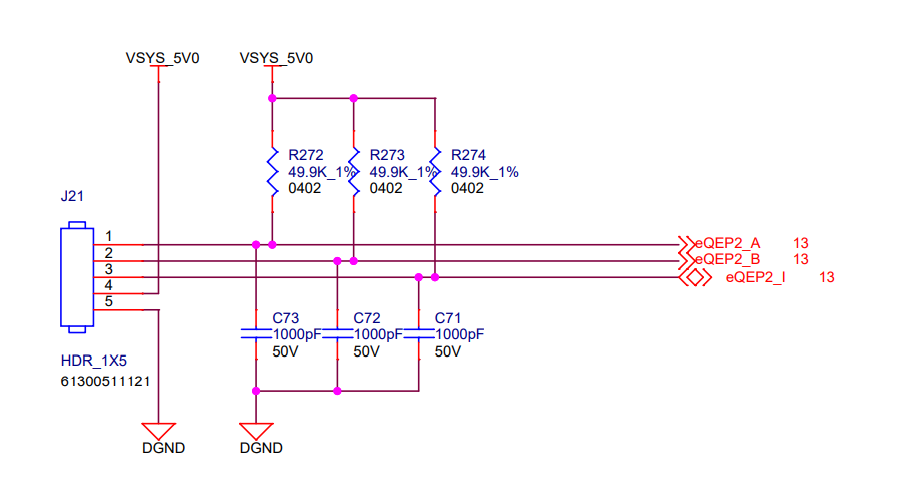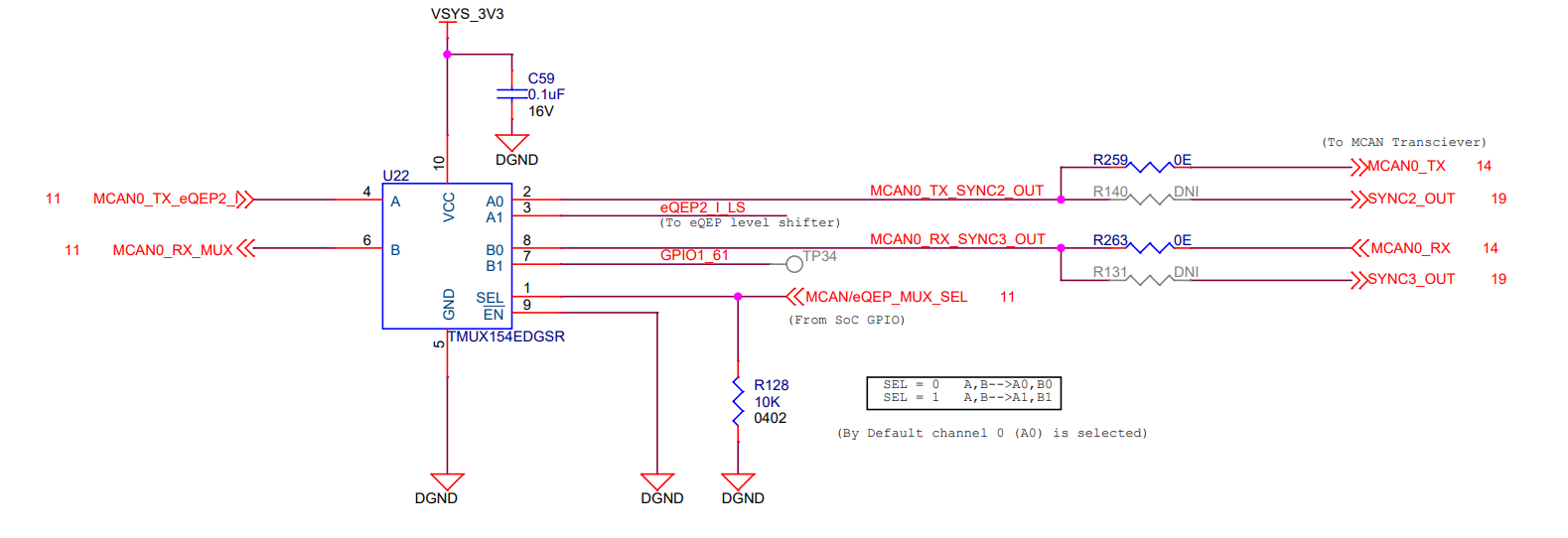SPRUJ12F August 2021 – January 2024 AM2431 , AM2432 , AM2434
- 1
- Abstract
- Trademarks
- 1Preface: Read This First
- 2Kit Overview
- 3Board Setup
-
4Hardware Description
- 4.1 Functional Block Diagram
- 4.2 BoosterPack Headers
- 4.3 GPIO Mapping
- 4.4 Reset
- 4.5 Clock
- 4.6 Memory Interface
- 4.7 Ethernet Interface
- 4.8 USB 2.0 Interface
- 4.9 I2C Interface
- 4.10 Industrial Application LEDs
- 4.11 UART Interface
- 4.12 eQEP Interface
- 4.13 CAN Interface
- 4.14 FSI Interface
- 4.15 JTAG Emulation
- 4.16 Test Automation Interface
- 4.17 SPI Interface
- 5References
- A E3 Design Changes
- B Revision A Design Changes
- Revision History
4.12 eQEP Interface
The AM243x LaunchPad supports two eQEP interfaces. eQEP1 and eQEP2 of the AM243x SoC are connected to the eQEP headers. Both eQEP1 and eQEP2 headers need a voltage translation circuit (TXB0106RGYR) to level shift the IO's to 5 V from 3.3 V.
- eQEP1_A, eQEP1_B, and eQEP1_I are directly connected to the eQEP header (J12) after voltage translation .
- eQEP2_A, eQEP2_B are directly connected to the eQEP header (J21) after voltage translation. eQEP2_I requires an external 1:2 mux (TMUX154EDGSR) since eQEP2_I and MCAN0_TX come from the same pin (B13). Mux channel selection is done using SoC GPIO.
 Figure 4-17 eQEP Interface
Figure 4-17 eQEP Interface Figure 4-18 eQEP1 Header
Figure 4-18 eQEP1 Header Figure 4-19 eQEP2 Header
Figure 4-19 eQEP2 Header Figure 4-20 eQEP2 or MCAN0 Mux Selection
Circuit
Figure 4-20 eQEP2 or MCAN0 Mux Selection
Circuit